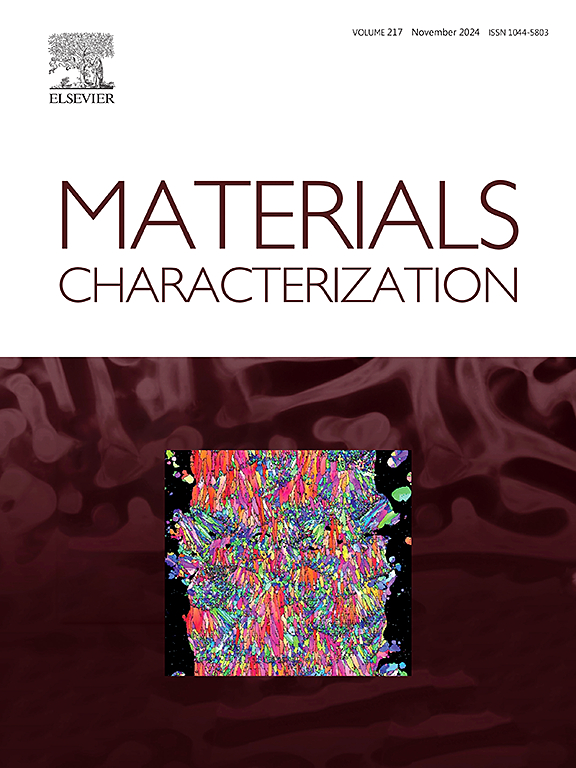Design strategy of graphene-reinforced metallic glass composites with simultaneous enhancement of strength and plasticity
IF 4.8
2区 材料科学
Q1 MATERIALS SCIENCE, CHARACTERIZATION & TESTING
引用次数: 0
Abstract
Bulk metallic glass composites (BMGCs) containing crystals exhibit enhanced ductility, overcoming the room-temperature brittleness of bulk metallic glasses (BMGs). However, the strength of BMGCs decreases significantly compared to BMGs. Here, an innovative strategy to strengthen BMGCs by adding in-situ graphene is proposed. In this study, graphene-reinforced BMGCs are prepared by a combination of chemical vapor deposition (CVD) and high-vacuum melt infiltration (HVMI), which effectively solves the problems of graphene agglomeration and poor interfacial bonding commonly encountered with traditional fabrication methods. It is found that the in-situ formed graphene and TiC during CVD and HVMI exhibit a synergistic strengthening mechanism through simultaneous dislocation pinning in crystalline phases and shear band multiplication in the glass matrix. Furthermore, graphene promotes load transfer and energy dissipation, which reduces interfacial stress concentration and thus improves the plastic deformability of BMGCs. This work not only deepens the understanding of the deformation mechanisms of BMGCs, but also provides vital guidance for the development of light-weight and high-strength BMGCs.

同时增强强度和塑性的石墨烯增强金属玻璃复合材料的设计策略
含有晶体的大块金属玻璃复合材料(BMGCs)具有增强的延展性,克服了大块金属玻璃(BMGs)的室温脆性。然而,与bmg相比,bmg的强度明显降低。本文提出了一种通过添加原位石墨烯来增强BMGCs的创新策略。本研究采用化学气相沉积(CVD)和高真空熔体渗透(HVMI)相结合的方法制备石墨烯增强BMGCs,有效解决了传统制备方法常见的石墨烯团聚和界面结合不良的问题。发现原位形成的石墨烯和TiC在CVD和HVMI过程中表现出一种协同强化机制,通过在晶相中同时进行位错钉住和在玻璃基体中同时进行剪切带倍增。此外,石墨烯促进了载荷传递和能量耗散,降低了界面应力集中,从而提高了bmgc的塑性变形能力。这项工作不仅加深了对BMGCs变形机理的认识,而且对BMGCs的轻量化、高强发展具有重要的指导意义。
本文章由计算机程序翻译,如有差异,请以英文原文为准。
求助全文
约1分钟内获得全文
求助全文
来源期刊

Materials Characterization
工程技术-材料科学:表征与测试
CiteScore
7.60
自引率
8.50%
发文量
746
审稿时长
36 days
期刊介绍:
Materials Characterization features original articles and state-of-the-art reviews on theoretical and practical aspects of the structure and behaviour of materials.
The Journal focuses on all characterization techniques, including all forms of microscopy (light, electron, acoustic, etc.,) and analysis (especially microanalysis and surface analytical techniques). Developments in both this wide range of techniques and their application to the quantification of the microstructure of materials are essential facets of the Journal.
The Journal provides the Materials Scientist/Engineer with up-to-date information on many types of materials with an underlying theme of explaining the behavior of materials using novel approaches. Materials covered by the journal include:
Metals & Alloys
Ceramics
Nanomaterials
Biomedical materials
Optical materials
Composites
Natural Materials.
 求助内容:
求助内容: 应助结果提醒方式:
应助结果提醒方式:


